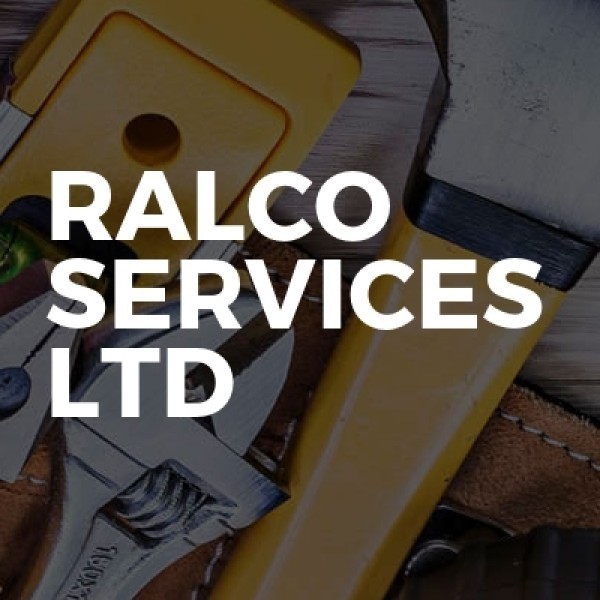Garage Doors in the UK
Welcome to Hilbre Project Management Ltd, your go-to experts for all construction needs in Gayton and across Merseyside. As a leading pro... read more »
Welcome to Rehman Shop-front Ltd, your trusted partner for top-notch shop fitting, double glazing, and garage door services in Ribbleton... read more »
Welcome to FMP Welding Ltd, your premier choice for top-notch trades services in Seven Kings, Redbridge, London.... read more »
Ralco Services Ltd: Premier Builders and Renovators in Falconwood and Bexley, London
Welcome to Ralco Services L... read more »
Welcome to London 247 BP Locksmith Services, your go-to solution for locksmith and handyman services in Hendon and the broader Barnet are... read more »
Complete Service Maintenance Ltd is... read more »
Welcome to Beechwood Property Maintenance, your go-to... read more »
A1 Garage Doors, nestled in the hear... read more »
Smart Doors, a reputable business ba... read more »
Welcome to Peace Of Mind Windows Ltd, your trusted pa... read more »
Welcome to LT Garage Doors, your go-to experts for al... read more »
Welcome to Oxford Windows And Doors, your trusted par... read more »
Welcome to The Shoreditch Window Company Ltd, your go... read more »
Welcome to Home Secure Solutions, your trusted partne... read more »
Welcome to Gordon Steele Enercare Ltd, your trusted p... read more »
Garage Door And Automation Company Ltdread more »
Welcome t... read more »
Welcome to Manchester Garage Doors Ltd, your go-to ex... read more »
Search Garage Doors by county
- Garage Doors in London
- Garage Doors in Bedfordshire
- Garage Doors in Berkshire
- Garage Doors in Bristol
- Garage Doors in Buckinghamshire
- Garage Doors in Cambridgeshire
- Garage Doors in Cheshire
- Garage Doors in Cornwall
- Garage Doors in County Durham
- Garage Doors in Cumbria
- Garage Doors in Derbyshire
- Garage Doors in Devon
- Garage Doors in Dorset
- Garage Doors in East Riding of Yorkshire
- Garage Doors in East Sussex
- Garage Doors in Essex
- Garage Doors in Gloucestershire
- Garage Doors in Greater Manchester
- Garage Doors in Hampshire
- Garage Doors in Herefordshire
- Garage Doors in Hertfordshire
- Garage Doors in Isle of Wight
- Garage Doors in Isles of Scilly
- Garage Doors in Kent
- Garage Doors in Lancashire
- Garage Doors in Leicestershire
- Garage Doors in Lincolnshire
- Garage Doors in Merseyside
- Garage Doors in Norfolk
- Garage Doors in North Yorkshire
- Garage Doors in Northamptonshire
- Garage Doors in Northumberland
- Garage Doors in Nottinghamshire
- Garage Doors in Oxfordshire
- Garage Doors in Rutland
- Garage Doors in Shropshire
- Garage Doors in Somerset
- Garage Doors in South Yorkshire
- Garage Doors in Staffordshire
- Garage Doors in Suffolk
- Garage Doors in Surrey
- Garage Doors in Tyne and Wear
- Garage Doors in Warwickshire
- Garage Doors in West Midlands
- Garage Doors in West Sussex
- Garage Doors in West Yorkshire
- Garage Doors in Wiltshire
- Garage Doors in Worcestershire
Introduction to Garage Doors
Garage doors are an essential part of many homes, providing security, convenience, and aesthetic appeal. They come in various styles, materials, and mechanisms, each offering unique benefits. Whether you're building a new home or upgrading your current garage, understanding the different types of garage doors can help you make an informed decision. In this article, we'll explore the world of garage doors, covering everything from materials and styles to installation and maintenance.
The Importance of Garage Doors
Garage doors serve multiple purposes beyond simply providing access to your garage. They enhance the curb appeal of your home, contribute to energy efficiency, and offer security for your vehicles and belongings. A well-chosen garage door can increase the value of your property and improve its overall appearance.
Security and Safety
One of the primary functions of a garage door is to protect your home from intruders. Modern garage doors come equipped with advanced security features, such as rolling code technology and smart locks, to ensure your home remains safe. Additionally, safety sensors prevent accidents by stopping the door if an object or person is detected in its path.
Energy Efficiency
Garage doors can significantly impact your home's energy efficiency. Insulated garage doors help maintain a stable temperature inside the garage, reducing energy costs and providing a more comfortable environment. This is particularly important if your garage is attached to your home or used as a living space.
Types of Garage Doors
Garage doors come in various types, each with its own set of advantages and disadvantages. Understanding these options can help you choose the right door for your needs.
Sectional Garage Doors
Sectional garage doors are the most popular type in the UK. They consist of several horizontal panels connected by hinges, allowing the door to open vertically and slide along tracks. This design is ideal for homes with limited driveway space, as the door doesn't swing outwards.
Advantages of Sectional Doors
- Space-saving design
- Good insulation properties
- Wide range of styles and materials
Disadvantages of Sectional Doors
- More complex installation
- Higher maintenance requirements
Roller Garage Doors
Roller garage doors are made from narrow slats that roll up into a compact coil above the door opening. They are an excellent choice for garages with limited headroom or where space is at a premium.
Advantages of Roller Doors
- Compact design
- Easy to operate
- Low maintenance
Disadvantages of Roller Doors
- Limited insulation options
- Higher cost for quality materials
Side-Hinged Garage Doors
Side-hinged garage doors are a traditional style that opens outward like a pair of barn doors. They are typically made from wood or steel and are ideal for garages used as workshops or storage spaces.
Advantages of Side-Hinged Doors
- Easy access without opening the entire door
- Classic appearance
- Simple operation
Disadvantages of Side-Hinged Doors
- Requires more space to open
- Limited insulation options
Up and Over Garage Doors
Up and over garage doors are a single solid panel that tilts up and slides into the garage ceiling. They are available in two types: canopy and retractable. Canopy doors extend slightly beyond the garage opening when open, while retractable doors fully retract into the garage.
Advantages of Up and Over Doors
- Simple design
- Cost-effective
- Wide range of materials
Disadvantages of Up and Over Doors
- Requires clearance space
- Limited insulation
Materials Used in Garage Doors
The material of a garage door affects its durability, appearance, and maintenance requirements. Let's explore some common materials used in garage doors.
Steel Garage Doors
Steel is a popular choice for garage doors due to its strength and versatility. It can be painted in various colours and textures to match your home's exterior.
Advantages of Steel Doors
- Durable and strong
- Low maintenance
- Available in insulated options
Disadvantages of Steel Doors
- Prone to rust if not properly maintained
- Can dent easily
Wooden Garage Doors
Wooden garage doors offer a classic and elegant appearance. They can be customised with various stains and finishes to enhance their natural beauty.
Advantages of Wooden Doors
- Attractive and customisable
- Good insulation properties
- Environmentally friendly
Disadvantages of Wooden Doors
- Requires regular maintenance
- Can be expensive
Aluminium Garage Doors
Aluminium garage doors are lightweight and resistant to rust, making them ideal for coastal areas. They are available in a variety of styles and finishes.
Advantages of Aluminium Doors
- Lightweight and easy to operate
- Rust-resistant
- Low maintenance
Disadvantages of Aluminium Doors
- Less durable than steel
- Limited insulation options
Fibreglass Garage Doors
Fibreglass garage doors are known for their durability and resistance to dents and corrosion. They can mimic the appearance of wood without the maintenance requirements.
Advantages of Fibreglass Doors
- Durable and resistant to damage
- Low maintenance
- Can be designed to resemble wood
Disadvantages of Fibreglass Doors
- Can yellow over time
- Limited insulation properties
Choosing the Right Garage Door
Selecting the right garage door involves considering various factors, including your budget, style preferences, and functional needs. Here are some tips to help you make the best choice.
Consider Your Budget
Garage doors come in a wide range of prices, depending on the material, style, and features. Determine your budget before shopping to narrow down your options and avoid overspending.
Evaluate Your Needs
Consider how you use your garage and what features are most important to you. For example, if you use your garage as a workshop, you may prioritise insulation and natural light. If security is a concern, look for doors with advanced locking mechanisms.
Match Your Home's Style
Your garage door should complement the architectural style of your home. Choose a design and colour that enhances your home's exterior and adds to its curb appeal.
Think About Maintenance
Different materials require varying levels of maintenance. Consider how much time and effort you're willing to invest in maintaining your garage door. For instance, wooden doors require regular staining or painting, while steel and aluminium doors are relatively low maintenance.
Garage Door Installation
Installing a garage door is a complex task that requires precision and expertise. While some homeowners may choose to tackle the installation themselves, hiring a professional is often the best option to ensure a safe and efficient installation.
Professional Installation Benefits
Professional installers have the experience and tools necessary to install your garage door correctly. They can also ensure that the door is balanced and aligned, preventing future issues and extending the door's lifespan.
DIY Installation Considerations
If you decide to install the garage door yourself, be sure to follow the manufacturer's instructions carefully. You'll need basic tools and a helper to assist with lifting and positioning the door. Keep in mind that improper installation can lead to safety hazards and void the warranty.
Maintaining Your Garage Door
Regular maintenance is essential to keep your garage door functioning smoothly and extend its lifespan. Here are some maintenance tips to keep your door in top condition.
Inspect and Clean Regularly
Inspect your garage door for signs of wear and tear, such as rust, dents, or cracks. Clean the door with a mild detergent and water to remove dirt and debris. Lubricate moving parts, such as hinges and rollers, to ensure smooth operation.
Test Safety Features
Test the safety features of your garage door, such as the auto-reverse mechanism and photoelectric sensors, to ensure they are functioning correctly. If you notice any issues, contact a professional for repairs.
Check the Balance
A balanced garage door is crucial for smooth operation. To check the balance, disconnect the opener and manually lift the door halfway. If it stays in place, it's balanced. If it falls or rises, it may need adjustment.
Common Garage Door Problems and Solutions
Garage doors can experience various issues over time. Here are some common problems and their solutions.
Door Won't Open or Close
If your garage door won't open or close, check the remote batteries and ensure the opener is plugged in. If the problem persists, inspect the tracks for obstructions or damage.
Door Makes Loud Noises
Loud noises during operation may indicate loose hardware or worn rollers. Tighten any loose bolts and replace damaged rollers to reduce noise.
Door Moves Unevenly
If your door moves unevenly, it may be due to misaligned tracks or worn springs. Inspect the tracks for alignment and adjust as needed. If the springs are worn, contact a professional for replacement.
Enhancing Your Garage Door with Accessories
Accessories can enhance the functionality and appearance of your garage door. Here are some popular options to consider.
Smart Garage Door Openers
Smart garage door openers allow you to control your door remotely using a smartphone app. They offer convenience and security, as you can monitor and operate your door from anywhere.
Decorative Hardware
Add decorative hardware, such as handles and hinges, to give your garage door a customised look. These accessories are available in various styles and finishes to match your home's exterior.
Windows and Inserts
Windows and inserts can add natural light and visual interest to your garage door. Choose from a variety of shapes and designs to complement your home's style.
Frequently Asked Questions
- What is the most durable material for garage doors? Steel is considered one of the most durable materials for garage doors due to its strength and resistance to damage.
- How often should I maintain my garage door? It's recommended to perform maintenance on your garage door at least twice a year to ensure optimal performance.
- Can I install a garage door myself? While it's possible to install a garage door yourself, hiring a professional is recommended to ensure a safe and accurate installation.
- What are the benefits of insulated garage doors? Insulated garage doors help maintain a stable temperature inside the garage, reducing energy costs and providing a more comfortable environment.
- How do I choose the right garage door style? Consider your home's architectural style, your budget, and your functional needs when choosing a garage door style.
- Are smart garage door openers secure? Yes, smart garage door openers offer enhanced security features, such as remote monitoring and control, to keep your home safe.
Garage doors are a vital component of your home, offering security, convenience, and aesthetic appeal. By understanding the different types, materials, and features available, you can choose the perfect garage door to meet your needs and enhance your home's value. Regular maintenance and the right accessories can further improve the functionality and appearance of your garage door, ensuring it serves you well for years to come.
Send a message











